Key takeaways:
- Continuous feedback loops enhance growth in creative fields by transforming audience input into valuable insights that shape artistic direction.
- Various strategies for gathering feedback include hosting listening sessions, using social media polls, and utilizing online feedback platforms.
- Building a culture of feedback involves creating an open environment, responding to insights, and fostering connections between artists and audiences.
- Measuring the impact of feedback can be done through engagement metrics, sales, and informal surveys, demonstrating how audience input directly influences promotion and branding.
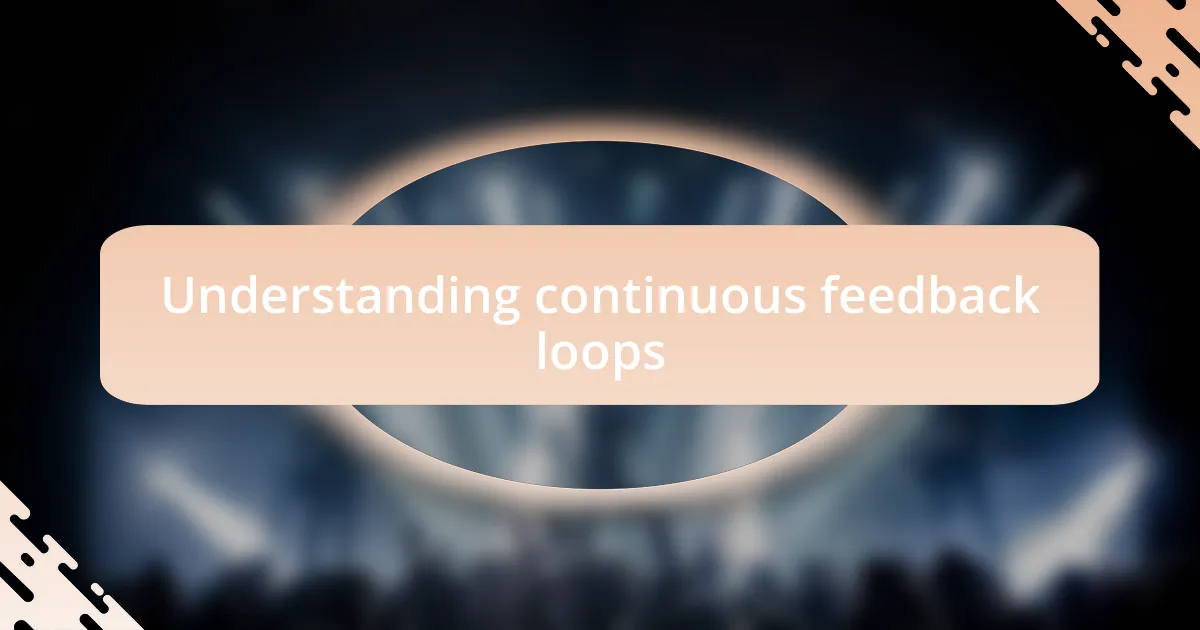
Understanding continuous feedback loops
Continuous feedback loops are essential in fostering growth and improvement, especially in creative fields like music promotion. From my experience, it’s fascinating how real-time feedback can shape the direction of a band’s image and outreach. Imagine uploading a new track and receiving instant reactions—those comments help refine not just the music but also how it resonates with fans.
When I think about my early days promoting a local band, we relied on sporadic feedback from friends and family. It wasn’t until we established a consistent channel for audience input that we truly began to evolve. The thrill of hearing from fans who felt connected to our journey brought an emotional depth to our work. Isn’t it amazing how someone else’s perspective can illuminate blind spots in our own creative vision?
I now view feedback as a conversation rather than a critique. Each response is a piece of valuable insight, painting a clearer picture of what works and what doesn’t. Engaging with our audience in this loop transforms their experience from passive reception to active participation in our artistic evolution. Isn’t that what every band hopes for—to create a community that feels like part of their story?
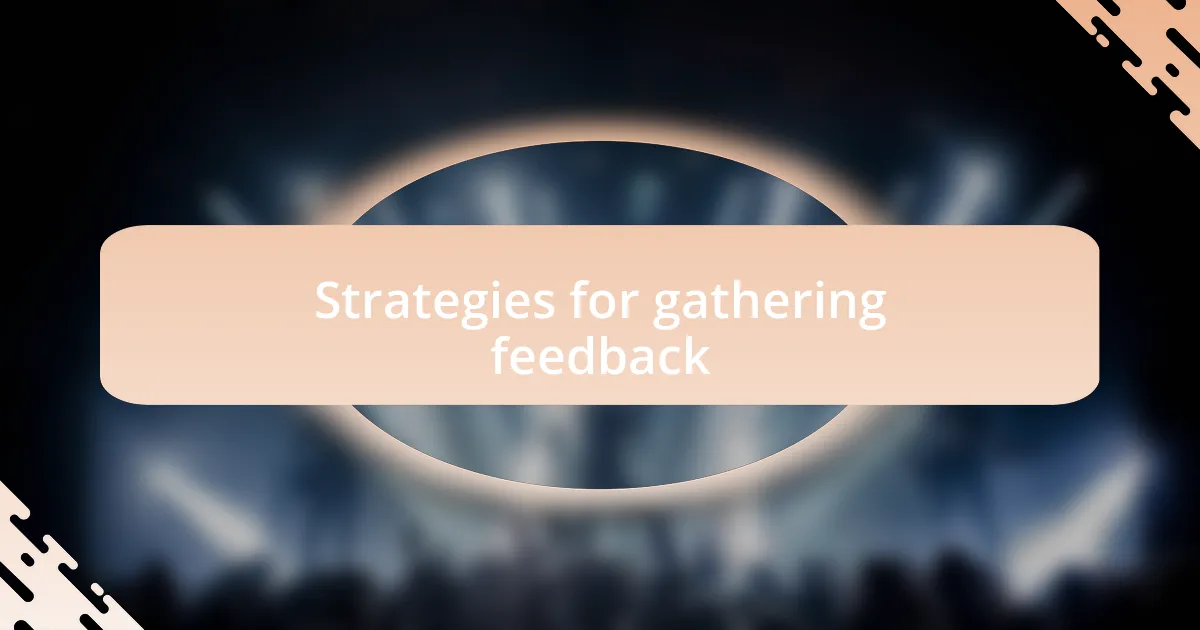
Strategies for gathering feedback
One effective strategy I’ve found for gathering feedback is to host listening sessions with both core fans and new listeners. When we invited a small group to preview our latest demo, the discussion sparked invaluable insights. I remember one fan noting how a specific lyric resonated with them, which encouraged me to explore that theme further in our next songs. How often do we overlook these opportunities for connection?
Another approach is using social media polls. I once experimented with a simple Instagram poll to decide between two cover songs. The thrill of seeing the votes pour in was electric, and the engagement it generated made it clear that our audience was invested in our decisions. Have you ever realized that sometimes fans want to play a part in shaping the music they love?
Lastly, I’ve learned that online platforms for feedback, such as dedicated forums or even direct email channels, can be goldmines. After we launched a new single, I encouraged fans to share their thoughts via a feedback form. The responses varied from suggestions to heartfelt messages about how the song impacted them, underscoring that our music truly resonated. Isn’t it rewarding when your art elicits emotions that you hadn’t anticipated?
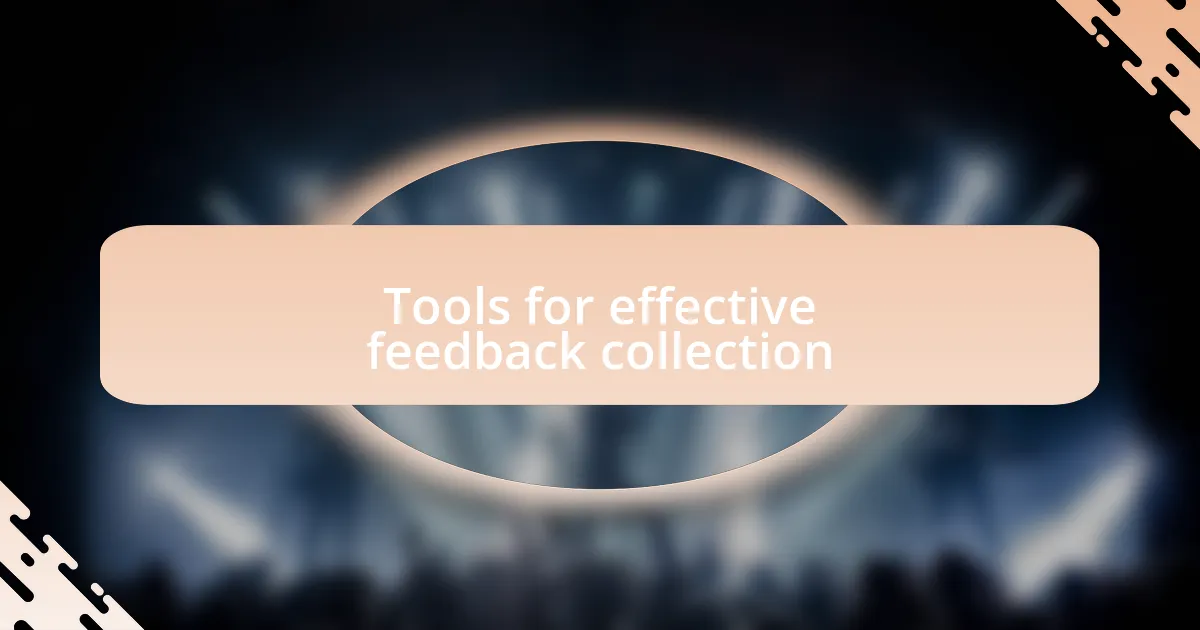
Tools for effective feedback collection
When it comes to tools for effective feedback collection, I’ve had great success with survey software like SurveyMonkey or Google Forms. I remember sending out a brief survey after a live gig, asking fans what they loved most about the performance and what could be improved. The insights I received were not only essential for enhancing future shows but also made my fans feel heard. Don’t you find it fascinating how such simple questions can spark meaningful conversations?
Another powerful tool is utilizing music platforms that incorporate comment sections, such as Bandcamp or SoundCloud. I once uploaded a track on SoundCloud and was amazed at how quickly listeners shared their thoughts in the comments. Some expressed how they related to the lyrics, while others suggested innovative changes. Hasn’t it amazed you how immediate feedback can shape the trajectory of a song?
Finally, I’ve explored video conferencing tools for real-time discussions, especially during recording sessions. Using Zoom, I invited a few fans to listen in and provide feedback live as we worked on a new song. The energy in those sessions was palpable, and hearing their excitement firsthand inspired me to take creative risks I might not have considered otherwise. Have you ever thought about how engaging in direct dialogue with your audience could elevate your music?
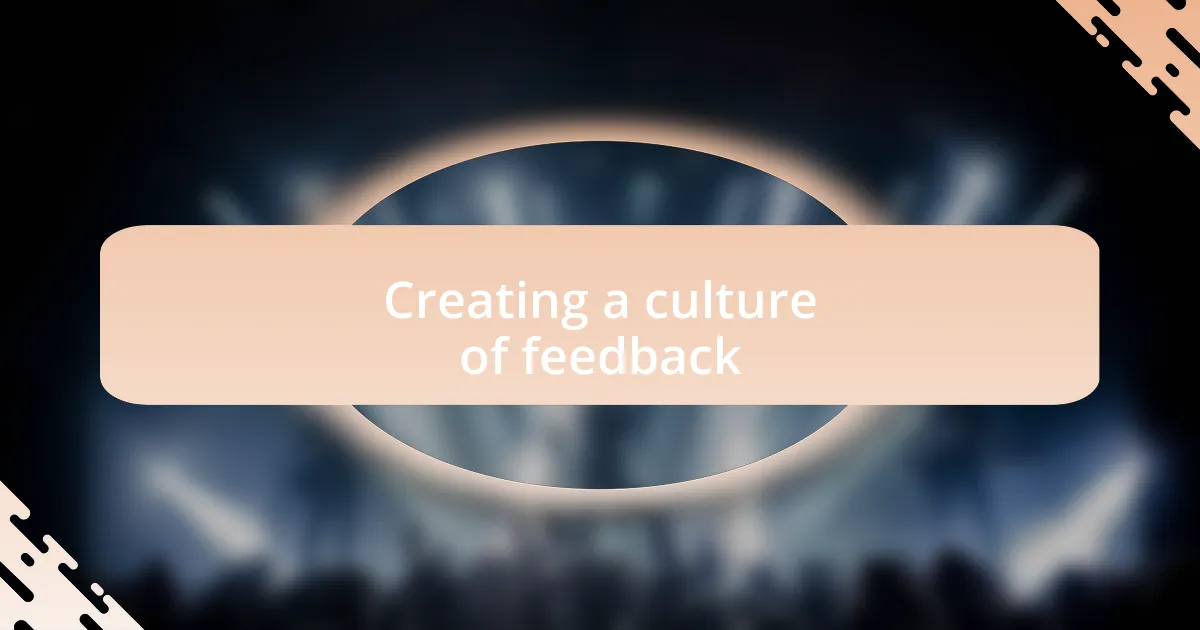
Creating a culture of feedback
Creating a culture of feedback begins with fostering an open environment where everyone feels comfortable sharing their thoughts. I remember a time when I encouraged my bandmates to share their opinions on our new tracks during practice sessions. The first time we tried this, it felt a little awkward, but once everyone realized that their input was valued, the quality of our music improved dramatically. Have you ever noticed how comfortable conversations can lead to breakthrough ideas?
I’ve found that actively seeking feedback not only enhances our music but also strengthens relationships within the band and with our audience. For instance, after soliciting input on our promotional strategies, we incorporated fans’ suggestions into our marketing campaigns. The feeling of connection with our supporters soared, which made our music even more meaningful to us. Isn’t it incredible how feedback can bridge the gap between artists and listeners?
To truly embed a culture of feedback, it’s crucial to respond to the insights we receive. I recall a fan reaching out on social media, excited about a song that resonated with their personal struggles. I made it a point to thank them and even shared how their story influenced our upcoming music. This responsiveness not only builds trust but also encourages others to share their thoughts. Don’t you think an engaged audience is the key to artistic growth?

Personal experiences with feedback
Reflecting on my journey, feedback has often felt like an unexpected gift. I vividly recall performing at a small venue where the acoustics were less than ideal. After the show, an audience member shared how they loved one of our ballads, but struggled to hear the lyrics clearly. I took that to heart and realized that addressing sound quality could elevate the emotional experience of our performance. Have you ever experienced a moment where a single piece of advice transformed your approach?
Another time, I invited some local musicians for a jam session, hoping to gain fresh insights. One of them suggested a different arrangement for one of our original songs. Initially, I was hesitant; change can be daunting. But as we experimented, I felt a rush of creativity that reinvigorated our sound. Isn’t it amazing how stepping outside your comfort zone can spark new energy?
Lastly, I’ve always believed that feedback isn’t just about the music; it’s about forging connections. I once received a handwritten letter from a fan expressing how our music helped them through a tough time. This personal touch struck a chord with me, illustrating just how impactful our art can be. How often do we stop to recognize the profound effect our work has on others?
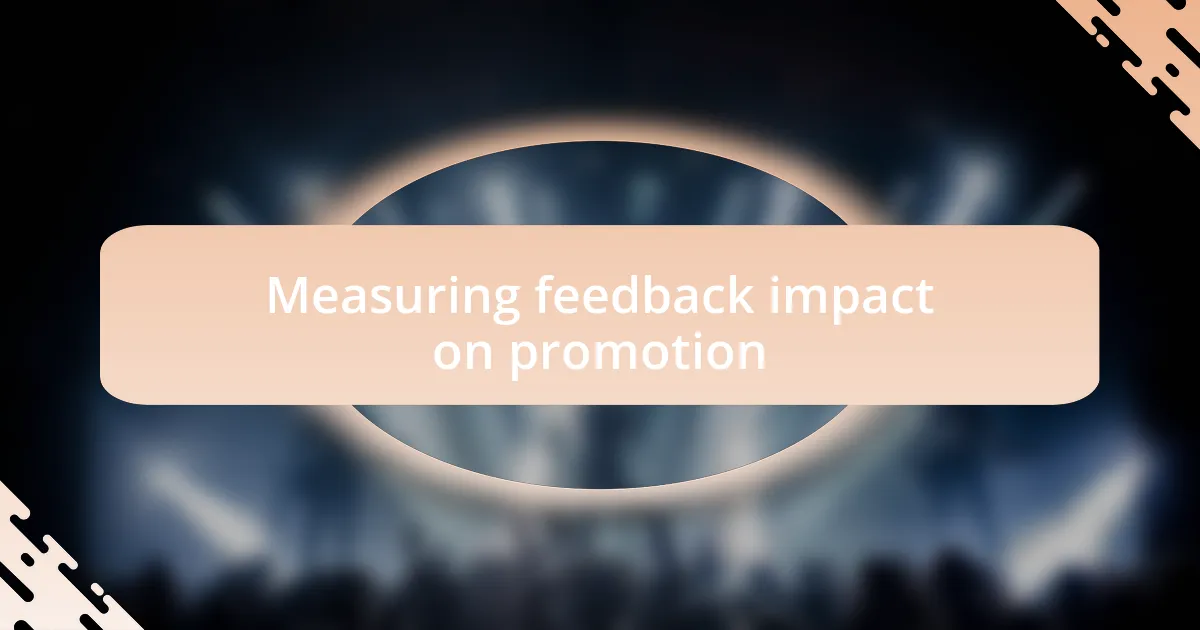
Measuring feedback impact on promotion
When measuring the impact of feedback on promotion, I’ve often turned to audience engagement metrics. For instance, after implementing changes based on feedback, I noticed an increase in our social media interactions and website visits. Isn’t it fascinating how a few adjustments can resonate so deeply with our listeners?
Another important aspect is tracking sales and streaming numbers following feedback-related changes. After adjusting our setlist based on input from fans, I saw a spike in streaming for the songs featured more prominently. Isn’t it encouraging to see how direct feedback can correlate with tangible growth in a band’s reach?
Additionally, I sometimes conduct informal surveys after shows to gauge audience satisfaction. I recall a specific instance where we asked about our promotional materials and got insights that led to a complete redesign. It was incredible to see how audience preferences directly influenced our branding, proving that listening leads to better alignment with our fan base. How can we ignore the voices that propel us forward?